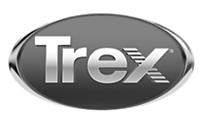UNITED STATES
SECURITIES AND EXCHANGE COMMISSION
Washington, D.C. 20549
FORM 10-Q
QUARTERLY REPORT PURSUANT TO SECTION 13 OR 15(d) OF THE SECURITIES EXCHANGE ACT OF 1934 |
For the quarterly period ended September 30, 2019
OR
TRANSITION REPORT PURSUANT TO SECTION 13 OR 15(d) OF THE SECURITIES EXCHANGE ACT OF 1934 |
For the transition period from to
Commission File Number: 001-14649

(Exact name of registrant as specified in its charter)
| |
| |
| (State or other jurisdiction of incorporation or organization) |
(I.R.S. Employer Identification No.) | |
| |
| |
| (Address of principal executive offices) |
(Zip Code) |
Registrant’s telephone number, including area code: (540 ) 542-6300
Not Applicable
(Former name, former address and former fiscal year, if changed since last report)
Indicate by check mark whether the registrant (1) has filed all reports required to be filed by Section 13 or 15(d) of the Securities Exchange Act of 1934 during the preceding 12 months (or for such shorter period that the registrant was required to file such reports), and (2) has been subject to such filing requirements for the past 90 days. Yes
☒
No☐
Indicate by check mark whether the registrant has submitted electronically every Interactive Data File required to be submitted pursuant to Rule 405 of Regulation Yes
S-T
during the preceding 12 months (or for such shorter period that the registrant was required to submit such files). ☒
No ☐
Indicate by check mark whether the registrant is a large accelerated filer, an accelerated filer, a
non-accelerated
filer, a smaller reporting company or an emerging growth company. See the definitions of “large accelerated filer,” “accelerated filer,” “smaller reporting company,” and “emerging growth company” in Rule 12b-2
of the Exchange Act.:| |
☒ |
Accelerated filer |
☐ | |||
| Non-accelerated filer |
☐ |
Smaller reporting company |
| |||
| Emerging growth company |
|
If an emerging growth company, indicate by check mark if the registrant has elected not to use the extended transition period for complying with any new or revised financial accounting standards provided pursuant to Section 13(a) of the Exchange Act
☐
Indicate by check mark whether the registrant is a shell company (as defined by Rule ☒
12b-2
of the Exchange Act): Yes ☐
No The number of shares of the registrant’s common stock, par value $.01 per share, outstanding at October 15, 2019 was 58,336,505 shares.
Securities registered pursuant to Section 12(b) of the Act:
| Title of each class |
Trading Symbol(s) |
Name of each exchange on which registered | ||
| |
|
|